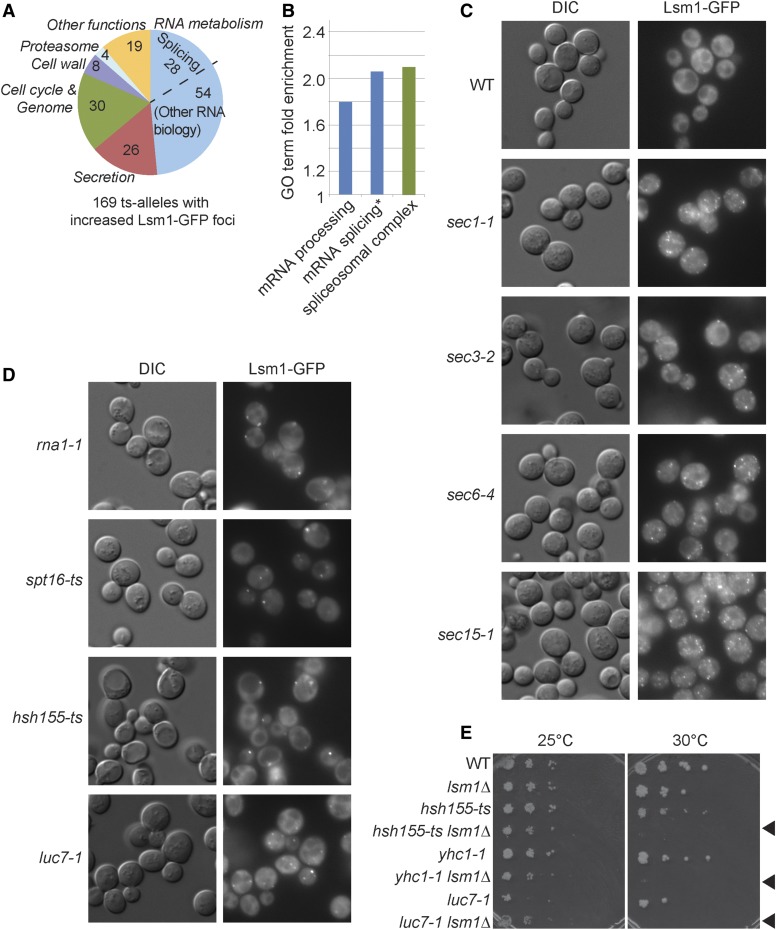Figure 4.
Cytological analysis of P-body formation in each ts allele. (A) Overall functional groupings of 169 genes whose mutation increases spontaneous P-body formation. 82 genes functioning in RNA metabolism were identified (light blue), 28 of which function in splicing. (B) GO term enrichment among P-body forming mutants. Using the alleles tested as a background set, only mRNA processing and splicing-related terms are significantly enriched. *Full name of the term is mRNA splicing, via spliceosome. (C and D) Examples of the varied morphology of P-body induction phenotypes. (C) Typical P-body induction in secretion mutants where many punctate Lsm1-GFP speckles form. (D) Several different RNA processing mutants where P-bodies are usually present as a single focus or as a few foci in each cell. Images in (C) and (D) were taken after a 2-hr temperature shift from 25° to 37°. (E) Spot dilution assays of splicing mutants identified in the Lsm1-GFP foci screen with or without the LSM1 gene. Black arrows indicate the double mutant strains are unable to grow at the normally permissive temperature of 30°.

